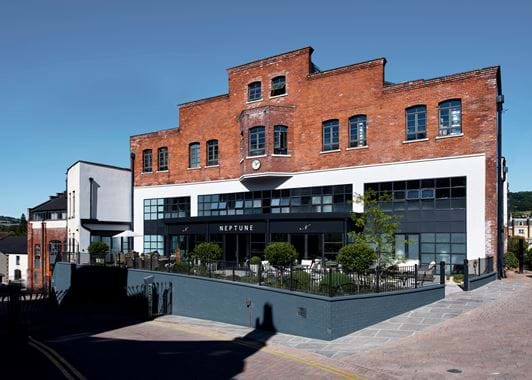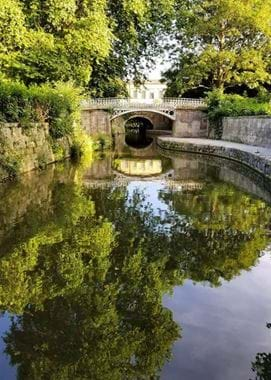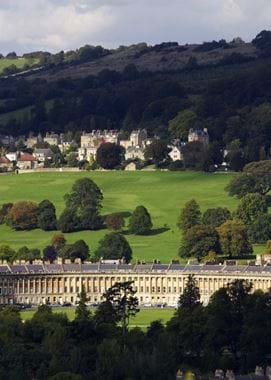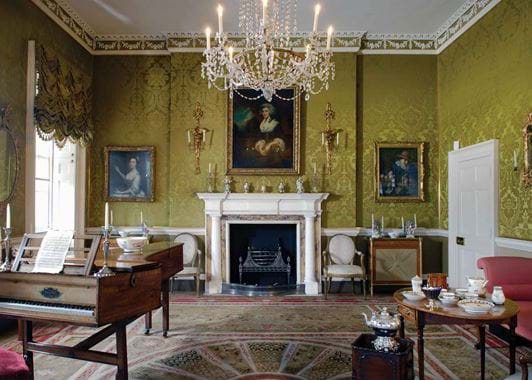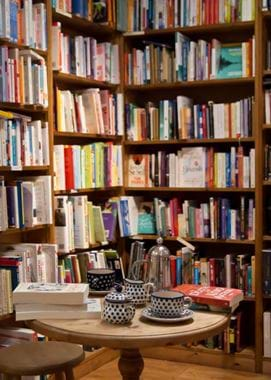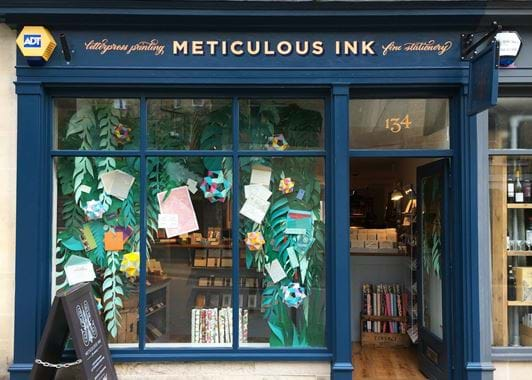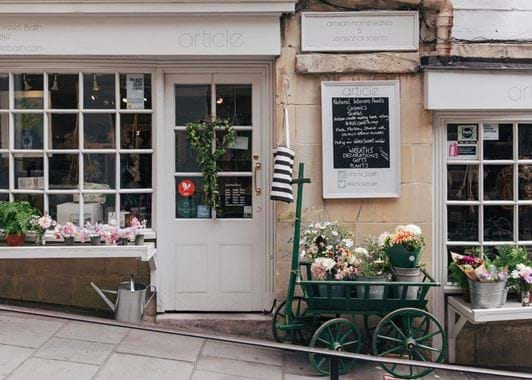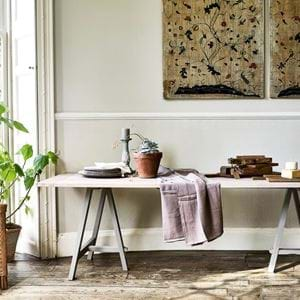When in… Bath
When in… Bath
Bath’s one of those places that’s much closer to London than you think – about one-and-a-half hours by train, or two-and-a-half by car – but far enough away that you feel you’re getting away from it all.
On top of that, it’s one of the prettiest cities in the country, thanks to the landmarks left behind from the Roman and Georgian eras. During Jane Austen’s day, high society flocked here to bathe in the natural spring waters, and be seen at fashionable spots like the famous Pump Rooms.
Our store’s just a short walk away from Bath’s main attractions, including the Roman Baths, the Royal Crescent and the many museums dotted around the town centre. Whether you’re spending the weekend here or just a day out, these are our favourite places to explore after you’ve come to see us.
To do
Built in the 1770s, the neoclassical townhouses of the Royal Crescent are the jewel in Bath’s architectural crown. This one’s furnished as it would’ve been in the 18th century, from the “withdrawing room” whose walls are covered in lavish damask silk, to the homely working kitchen in the basement. As you wander around, you’ll spot curiosities that the original owners might once have used, like tea caddies, a medicine cabinet and a wig scratcher.
The Botanical Gardens at Royal Victoria Park
Just south of Royal Crescent is this leafy park, which opened in 1830 and established its own botanical garden in 1887. The latter has a rock garden, a collection of heritage roses and a scented walk, as well as a replica of a Roman temple. Don’t miss the aerial walkway in the woodland garden - from here you can see right across the park into the city.
Jane Austen, who lived just opposite at 4 Sydney Place, loved to walk around this park – it’s one of the few remaining 18th-century pleasure gardens in the UK. It’s laid out much as it was then, with the Kennet and Avon Canal running through, and a series of elegant iron bridges from which you can admire the mature trees and flowerbeds. While you’re there, pop in and see art and antiques at the Holburne Museum, which sits on the park’s western edge.
About ten minutes’ drive north of Bath, at the top of Lansdown Hill, you’ll find this 120-foot neoclassical tower, built in 1826 as a retreat for the eccentric Gothic novelist William Beckford. He used it to house his art collection – part of which is still there – but the highlight is the pink spiral staircase. Climb to the top for wonderful views of the surrounding countryside.
Summer’s undoubtedly the best time to visit this working farm about half an hour’s drive south of Bath, as its 10-acre lavender fields are in full bloom. Whatever time of year you go, though, there’s always something to see. Explore the healing garden planted with medicinal herbs, the flower and vegetable garden whose produce is used in the café, and the plant nursery where you can buy many varieties of lavender to take home.
To eat
A hop, skip and a jump from the town’s main attractions, The Provenist’s a home-from-home sort of café with a seasonal, sustainably-minded menu. Championing locally sourced and specialist produce with a conscience, enjoy a nourishing brunch, lunch or cake and a coffee before taking a wander around Neptune Bath just next door.
If you’re looking for Bath’s best breakfast and brunch spots, Café Lucca’s at the top of our list – it’s part of fashion and homeware store The Loft and is a lovely place to soak up the local atmosphere. Sandwiches and pastries are made by local artisan baker Richard Bertinet (whose bakeries you can find in the centre of town and by the train station), and there’s always a different selection of homemade cakes to enjoy.
Another place to go for breakfast or afternoon tea is this pretty café in Bath’s oldest house, home of the Bath Bun, which was invented by baker Sally Lunn in the 1680s. A bit like a teacake or brioche, it’s served toasted with all kinds of toppings, from smoked salmon to cinnamon butter. After you’ve tried it, visit the kitchen museum, believed to be the place where Sally herself baked.
Vegan food’s the speciality at this tiny restaurant in the old town centre, where the Georgian panelled interior’s simply furnished with mid-century designs. It’s great for healthy lunches – try the beetroot barley risotto followed by Tonka bean-poached pears. If you’re inspired by what you eat, take home one of the restaurant’s three recipe books.
To shop
We’ve hosted calligraphy workshops at our Bath store with this stationery shop (as well as featuring them in our fifth volume of Stories) which is just up the road from us on Walcot Street. Owner Athena Cauley-Yu’s paper goods are printed using 1960s printing presses (you might be lucky enough to see them at work during your visit) and include everything from quirky greetings cards to notepads. There are also gift ideas aplenty, like old-fashioned fountain pens and scented inks, and you can have your own bespoke stationery made.
This independent bookshop’s a favourite with Bath residents, which is why we asked the owners to guest-edit our Book Club in this autumn’s issue of Stories. The store itself is full of old-school charm, with handmade wooden bookshelves, rolling library ladders and oak floors. You’ll be offered tea or coffee as you browse the 50,000 titles, so don’t be surprised to find yourself whiling away a few happy hours here.
On a quiet street a stone’s throw from the Assembly Rooms, you’ll find this homes store, which sells vintage furniture and local pottery alongside bouquets made in its basement florist’s studio. Posies of dried English flowers and colognes by Portuguese pharmacy Claus Porto make lovely gifts.
While some of the fashion in this lifestyle store might be a bit brash for some, we’re more interested in its stylish displays – think vintage shop cabinets set against whitewashed walls – and Scandinavian-style homewares, including pottery from Finnish brand Marimekko. There’s also some great artisan chocolate to try, by makers like Land, Pump Street and Rococo.
Housed in a grand Georgian building near Bath Abbey, this is the sister gallery to Beaux Arts in London’s Mayfair and has work by some very famous names, like painter Sir Terry Frost and potter Dame Lucie Rie. Don’t be put off if you’re not a serious collector, though – there’s plenty by smaller, younger artists too. Helen Simmonds’ still life paintings of household objects and Chris Keenan’s Japanese-style pottery are just two things to look out for.
Neptune Bath
And while you’re in town, we’d love it if you stopped by.

